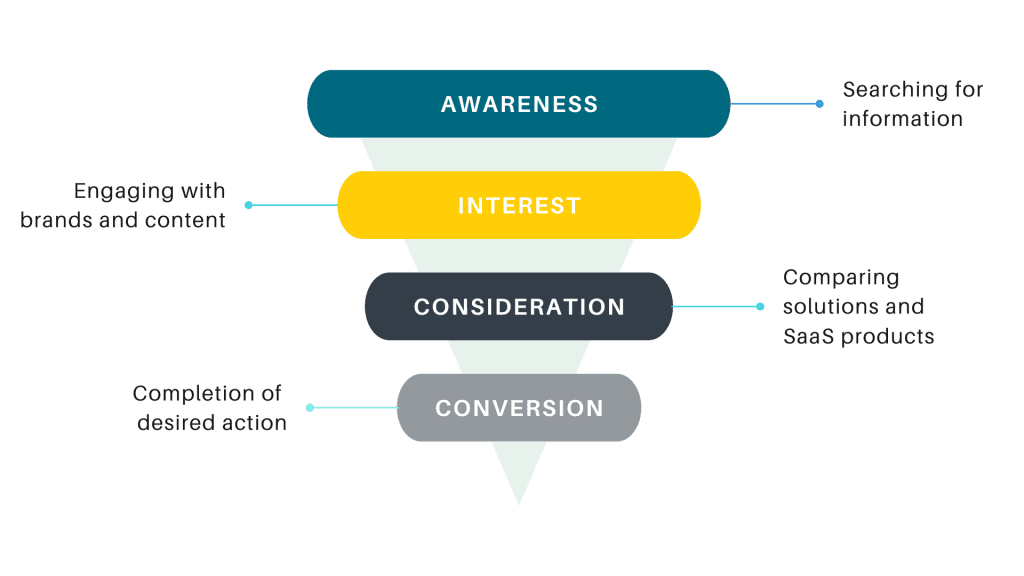Another Tradeshow Season in Lockdown: What Can Your Company Do?
It’s been about a year since in-person tradeshows were first canceled. Many B2B organizations tried virtual tradeshows and conferences, hoping the temporary change would be just that…temporary. In the end, the virtual events just didn’t have the oomph many businesses had hoped for.
Now, in 2021, there’s hope on the horizon for future in-person events. Unfortunately, this won’t be happening in time for the typically busy spring tradeshow season. As companies look to put their budgets towards useful tools and services, their decision-makers won’t be able to shake hands and speak with you in-person.
What’s the best way to reach an online, home-based audience now that many virtual events have been a flop for exhibitors? And how will you reallocate your budget to maximize ROI?
Virtual tradeshows come with insurmountable challenges
At live tradeshows, attendees have plenty of time to spend perusing nearby exhibit spaces. Someone may find your booth by pure chance as they leave a lecture, drawn in by a bright graphic or a piece of “swag,” but it can spark an organic conversation that leads to more engaged relationships with prospective clients—amounting to better customer retention in the long run.
During virtual events, you don’t feel that instant connection with prospects. And prospects don’t feel a particular connection to you. Virtual tradeshows present attendees with a “logo soup” to choose from, an impersonal way to get in front of customers who may be distracted at their desks.

Research by Freeman shows that 69 percent of exhibitors feel their experience at virtual events in the past year has been only fair or poor. And 63% say online events have not helped them meet any of their goals.
Generally speaking, those of our clients who did participate in virtual tradeshows felt they weren’t effective from a business development standpoint. They’re finding ways to cope and redirect their budgets to marketing tactics that don’t rely on a full-capacity meeting venue.
How companies are coping
For sales-driven organizations that once relied heavily upon trade shows for lead generation, the past year has been a blow. Now, many of those companies are turning to modern marketing with hopes of making the next sales cycle a lot more successful.
Some of these organizations have never had a marketing function at all. Others may have had a marketing function that was more or less a sales enablement tool. Now, they are learning about inbound strategies and lead generation, developing campaigns and tracking metrics around things like:
- Paid search and display ads
- Paid social media ads
- Content marketing
- Search engine optimization (SEO)
- Email marketing
They’re also taking the time to rebuild their brands and develop compelling messaging to strengthen their positions in the market.
The silver lining of modern marketing
The absence of tradeshows could actually present a silver lining for companies who are stuck in tried-and-true sales methods. These organizations can now “meet” buyers in a different place—at the top of the marketing funnel.
In today’s digital world, your buyers don’t want to feel like they’re being sold to. They want to proactively buy. Decision-makers desire to be empowered with all of the information they need to make an informed decision and then choose the right fit, without being bombarded with sales pitches.

This power shift has empowered marketing to own a large part of what was historically the “sales funnel.” When organizations work the sales angle on buyers who aren’t ready to buy, it’s a losing proposition. Most people—myself included—don’t want to feel pestered by repetitive emails from hopeful salespeople looking for a 15-minute meeting.
Instead, sales-focused organizations can turn to inbound marketing to allow prospects to partially control what messages they receive and when.
Where to start with modern marketing
Now that the trade show hand has been cut temporarily, companies are investing in inbound strategies and in expanding their digital footprint. Companies like Marketri, a growth-focused B2B marketing consulting firm, are showing them the way to provide education for buyers who just have a problem and are trying to figure out the best solution.
With an inbound digital-focused strategy, sales-driven companies who have been missing out on connecting with buyers early in the sales cycle can now connect at the very top-of-funnel.
And the great news is that having a modern marketing function will only enhance and help monetize tradeshows moving forward once restrictions are lifted.
- You’ll have the tools you need to nurturing contacts pre-show.
- You can send thoughtful content post-show for those people who aren’t quite ready to buy. (We call these “marketing qualified leads” or MQLs.)
- You can carefully monitor online actions signaling intent with tradeshow leads.
In this way, sales begins to work from a “hot” lead standpoint, so you don’t have to call/email a contact multiple times just to mark them inactive.
Start tradeshow season the right way. Contact Marketri to learn how your B2B organization can take advantage of modern marketing.
If you’re interested in quick tips to help get you started on your B2B marketing journey, this is the guide for you. If you’re looking for more, start by scheduling a meeting with our CEO, Deb Andrews, to talk about how Marketri can help you create a profit-centered marketing strategy.





